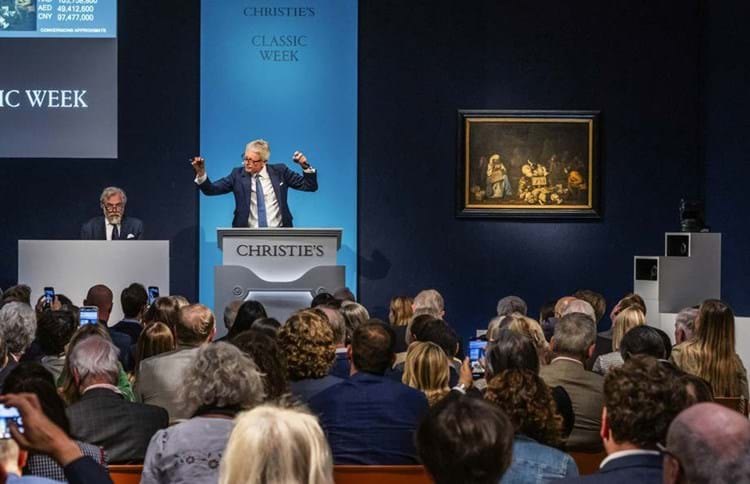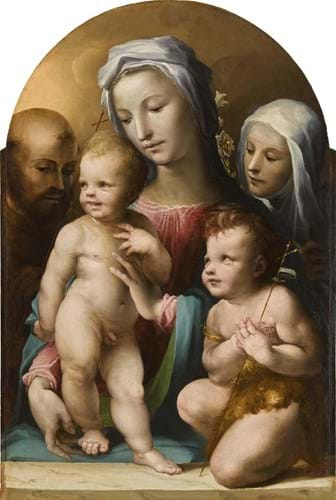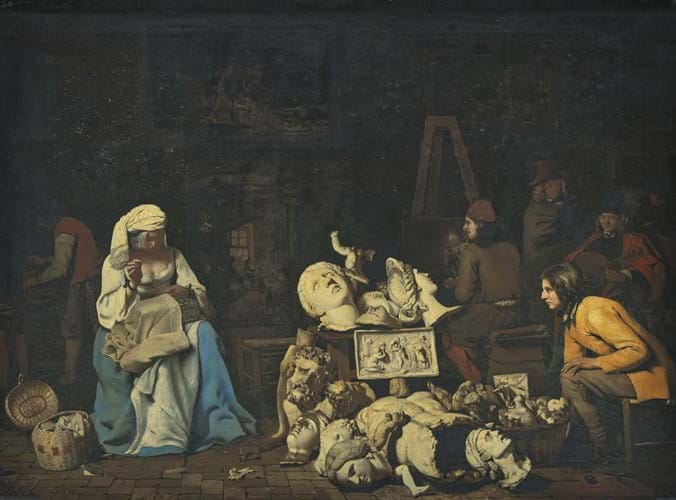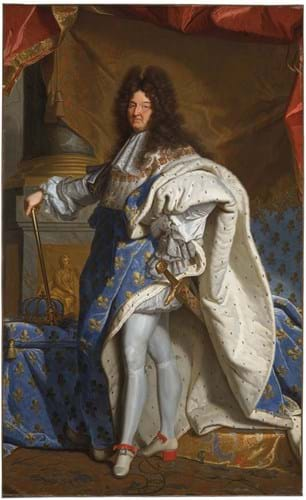
Christie’s global president Jussi Pylkkänen sells The Artist’s Studio with a Seamstress by Michael Sweerts for a record £10.7m. It was the top lot of the latest Old Master auction series in London.
On the face of it, the results from the latest Old Master auctions in London suggested a strengthening of the sector after a few difficult years.
But, as seasoned hands know only too well, the overall performance of this category is dependent on the number of quality lots that happened to emerge in any given series.
That is not to say that the underlying market conditions had no effect and, looking beyond the headline statistics, the sales were in fact something of a mixed bag overall.
First the good news. The auctions at Sotheby’s, Christie’s and Bonhams in early July had some undeniably rare and highly desirable material.
Following on from the bumper January sales in New York, it indicated a welcome improvement in supply.
The fact that the bulk of these works found willing takers – and in some cases drew fervent competition – lifted the series total to £111.1m with premium, the highest of any equivalent sales since 2017 and a vast improvement on the £48.4m last summer.
These results provided a boost to London’s position as an art market hub in the post-Brexit world. There were also some reports of more interest and activity from new and younger buyers. Christie’s, for example, said 36% of new registrants to its sales were millennials.
Punchy pitches
Now the more difficult news.
Despite the impressive overall figures, the sales often felt a bit lacklustre. Strong competition to win consignments led to plenty of guarantees and punchy-looking estimates which meant that some of the best works made high prices but sold on low estimate.
While you might argue this is a sign of a healthy rather than weak market, the lack of interest at the live event itself seemed to suck the energy out of the room at times.
The Old Master market also remains highly selective, with the middle market especially affected. With bidders reacting unfavourably against anything lacking in market freshness or with compromised condition, almost a third of the lots went unsold.
Finally, the high levels of inflation currently meant that many Old Masters had fallen in value over recent times. While certain works at the top end of the market showed significant returns are still possible (sometimes spectacularly so), a good number of lots posted real terms losses – something that belied the often-stated attraction of Old Masters as a place to store value.
Sotheby’s evening sale on July 5 recorded a selling rate of 65.3% (32 of the 49 lots sold), a figure on the low side for one these flagship London sales. The top lot of the auction seemed to sum up both the strengths and weaknesses of the current series.
The Pentecost scene by the artist known as ‘The Master of the Baroncelli Portraits’ (fl. c.1490s) sold at £7m, a significant sum in terms of any Old Master sold at auction. Reported and pictured in News, ATG No 2601, it had previously appeared at Christie’s in 2010 where it made £4.19m including premium, selling to London dealer Jean-Luc Baroni. The result here represented a good return on the 2010 price even accounting for inflation.
However, the lot came with a hefty pitch of £7m-10m and failed to generate bidding other than the ‘irrevocable bid’ from a third party arranged in advance of the sale.
Appearing as lot seven, it meant the sale lost a bit of momentum following a strong contest for the previous lot (the portrait of Katherine Parr also reported in this edition).
‘Rediscovery factor’

The Virgin and Child, with the infant St John the Baptist, St Francis and St Catherine of Siena by Domenico Beccafumi, £4.2m at Sotheby’s.
Fresher pictures generating more competition at Sotheby’s included another religious scene apparently from the same source.
The Virgin and Child… by Domenico Beccafumi (1484-1551) also had an ‘irrevocable bid’ but drew more competition against a £3m-4m estimate.
Known until recently only from old black and white photographs, the arched top oil on panel from c.1530 made its last public appearance nearly a century ago. The vendor had acquired it via an agent in 2010.
Described by Sotheby’s as “a prime example of the artist’s highly distinctive and expressive style”, the excellent condition of the 2ft 10in x 22¾in (86 x 58cm) panel as well as the ‘rediscovery factor’ stood in its favour commercially.
It was eventually knocked down to a phone buyer at £4.2m, more than triple the previous record for the artist at auction (the £1.2m for another painting of the Holy Family sold at Sotheby’s in 2006).
Unpublished work
Christie’s top lot, meanwhile, was the exceptional and previously unpublished work by Flemish painter Michael Sweerts (1618-64) that drew multiple bidders against a £2m-3m estimate. Offered at the Old Master part 1 sale on July 6, it was also pictured in News, ATG No 2601.
Its performance underlined how well the market still responds to a museum-quality picture offered completely fresh to the market and in an attractive state of preservation. Chased by a number of leading US dealers (thought to be bidding on behalf of clients) as well as private buyers, and maybe even an institution or two, it was knocked down on the phone at £10.7m, a major benchmark for the artist.
While this work had come from France (it had been bequeathed to the grandmother of the current vendors), another work at Christie’s with French connections also caught the eye.
Offered in the Exceptional sale also on July 6, the full-length portrait of Louis XIV (1638-1715) in coronation robes was catalogued as a studio copy of Hyacinthe Rigaud’s (1659-1743) original which is now in the Louvre.
One of the most compelling portraits of the Sun King, many different versions based on the original were made in differing sizes. No fewer than 56 copies are recorded as by Rigaud’s studio alone while many more were painted by artists working for the Bâtiments du Roi (who were responsible for disseminating the king’s image throughout the realm).
The 8ft 2in x 5ft (2.5 x 1.51m) oil on canvas at Christie’s was unusual for being a rare full-length version and also for its painterly quality.
Although not painted from life, the auction house described it as “an outstanding example of its type” and said it compared most closely with the prime picture in the Louvre and a secondary version now hanging in Versailles rather than the more routine copies.
Again, the lot had an element of rediscovery. It had appeared at an auction held by Huillier & Associés in Paris in 2020, part of a sale of works from ‘the attics’ of the Château de Mouchy. It had been catalogued as ‘French School, 18th Century’ and sold for €55,000 (£49,900). The buyer was the vendor at this latest Christie’s sale.
With the picture having since been restored with spectacular results, a long line of provenance stretching back to the Ducs de Noailles, a family tied by friendship and marriage to that of the king himself, had also been established. The Christie’s catalogue raised the tantalising prospect that this version may have been painted as ‘a gift from the king himself to honour the Noailles family’.
Guided at £200,000-300,000, it drew prolonged bidding and came down to a battle between two phone bidders. It was knocked down at £1.55m to a phone manned by Paul Gallois, Christie’s head of European furniture.
Although there was seemingly no suggestion that Rigaud may have actually painted this version himself, the price was nevertheless more than double his auction record.
The final sum also represented a 3000% increase on its last auction appearance less than three years ago – an inflation-busting return in anyone’s book.
Buyer’s premiums:
Sotheby’s: 26/20/13.9% + 1% overhead premium
Christie’s: 26/21/15%
















